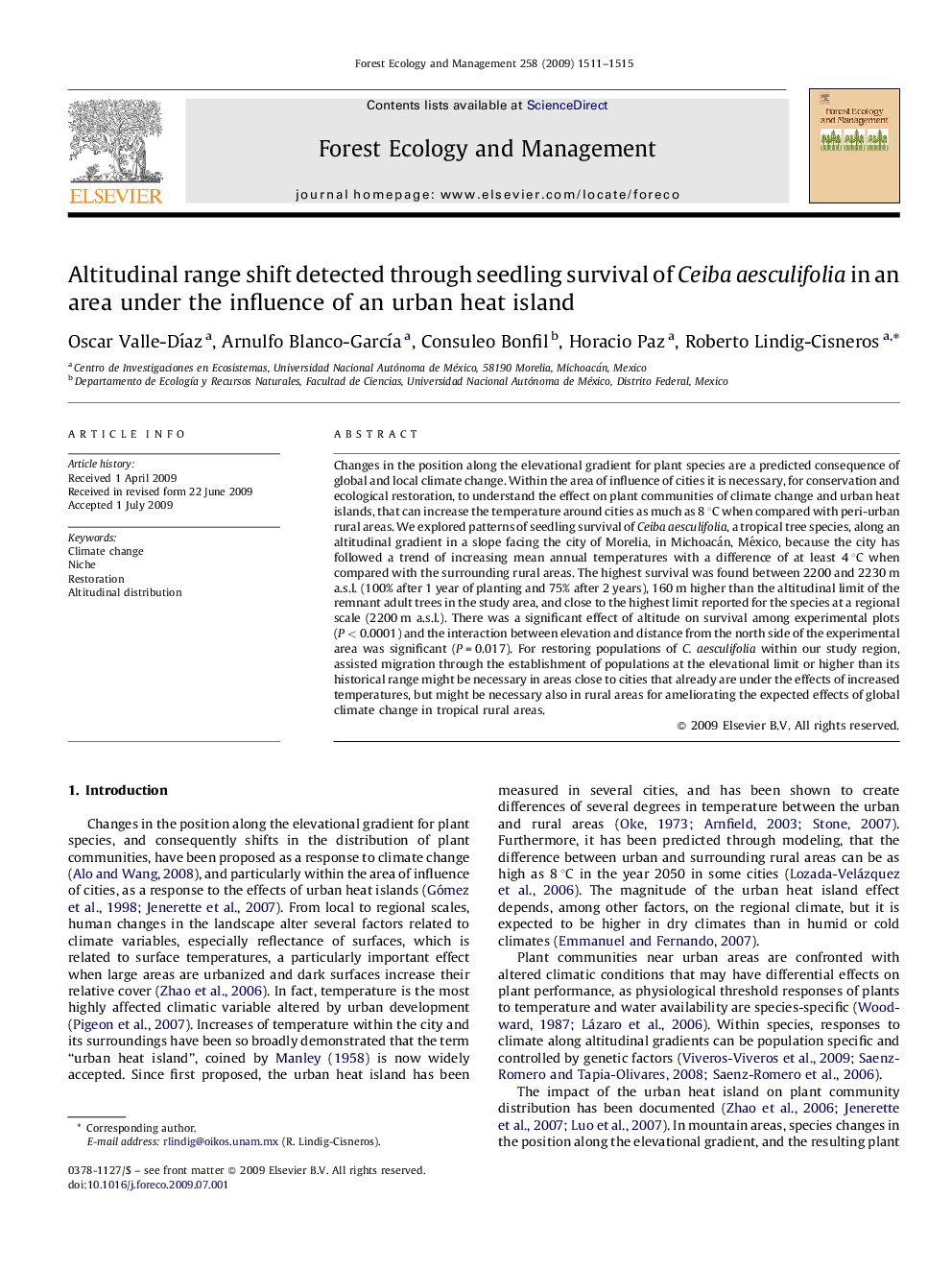| Article ID | Journal | Published Year | Pages | File Type |
|---|---|---|---|---|
| 88991 | Forest Ecology and Management | 2009 | 5 Pages |
Changes in the position along the elevational gradient for plant species are a predicted consequence of global and local climate change. Within the area of influence of cities it is necessary, for conservation and ecological restoration, to understand the effect on plant communities of climate change and urban heat islands, that can increase the temperature around cities as much as 8 °C when compared with peri-urban rural areas. We explored patterns of seedling survival of Ceiba aesculifolia, a tropical tree species, along an altitudinal gradient in a slope facing the city of Morelia, in Michoacán, México, because the city has followed a trend of increasing mean annual temperatures with a difference of at least 4 °C when compared with the surrounding rural areas. The highest survival was found between 2200 and 2230 m a.s.l. (100% after 1 year of planting and 75% after 2 years), 160 m higher than the altitudinal limit of the remnant adult trees in the study area, and close to the highest limit reported for the species at a regional scale (2200 m a.s.l.). There was a significant effect of altitude on survival among experimental plots (P < 0.0001) and the interaction between elevation and distance from the north side of the experimental area was significant (P = 0.017). For restoring populations of C. aesculifolia within our study region, assisted migration through the establishment of populations at the elevational limit or higher than its historical range might be necessary in areas close to cities that already are under the effects of increased temperatures, but might be necessary also in rural areas for ameliorating the expected effects of global climate change in tropical rural areas.
